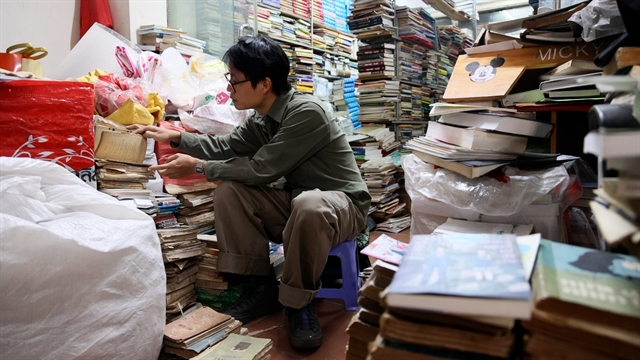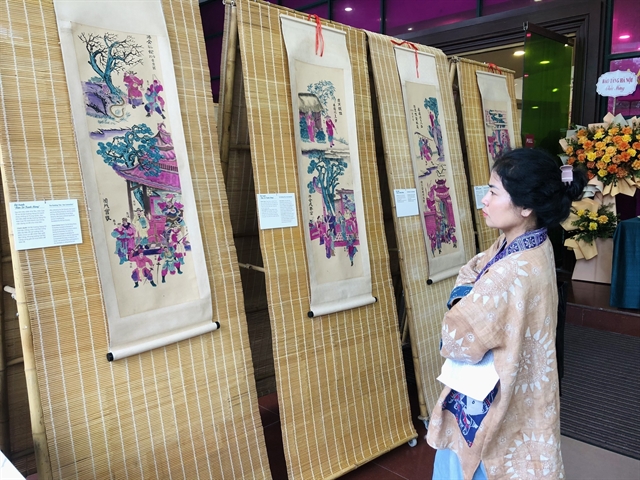 Life & Style
Life & Style


|
| A visitor at Tranh Truyện Hàng Trống (Hàng Trống Folk Paintings) exhibition. VNA/VNS Photos Phương Lan |
HÀ NỘI An exhibition showcasing 40 Hàng Trống folk paintings associated with popular folk tales in the spiritual and cultural life of Vietnamese people is taking place at the Vietnamese Women’s Museum in Hà Nội.
The Tranh Truyện Hàng Trống (Hàng Trống Folk Paintings) is organised by the museum in collaboration with the artist Phan Ngọc Khuê, an art researcher.
Genuine handicraft products, Hàng Trống paintings have a history of more than 500 years, and are linked to the rituals of ancestor worship.
The highlight of the exhibited items is their aesthetic value, the exquisite technique of woodblock printing, colour blending techniques, and especially the manifestation of the humanistic values and unique cultural identity of the ancient Vietnamese people.
According to researcher Khuê, the sets of paintings displayed in the Hàng Trống Folk Paintings exhibition were likely created from the 19th century until before the year 1945, and most are over 100 years old.

|
| The Vietnam Women's Museum receives a set of paintings entitled Chiêu Quân Cống Hồ as a donation from the researcher Phan Ngọc Khuê. |
Particularly, as part of the event, the Vietnam Women's Museum has received a set of paintings entitled Chiêu Quân Cống Hồ as a donation from the researcher. This set of paintings is among the artworks featured in the exhibition.
“The Chiêu Quân Cống Hồ paintings hold significant social value,” the researcher said.
“The female characters depicted in these paintings are exemplary figures, embodying virtues such as loyalty, filial piety, integrity and righteousness. They also aim to honour beautiful characters which are needed in the development of any contemporary society.
“The paintings enable the public to reflect on the noble examples set by past generations in the cultural heritage of the nation,” he added.
Nguyễn Thị Tuyết, the Director of the Vietnam Women's Museum, said the exhibition is expected to increase the appreciation and understanding of the beauty and value of the renowned genre of Hàng Trống paintings.
The Director also expressed gratitude to the researcher for collaboration with the museum in organising the Hàng Trống Folk Paintings.
She believed that this event opens up opportunities for future collaborations with cultural and art collectors, enabling the Vietnam Women's Museum to effectively connect cultural heritages and contribute to the dissemination of the cultural values of the Vietnamese people.
The exhibition is open until March 31. VNS